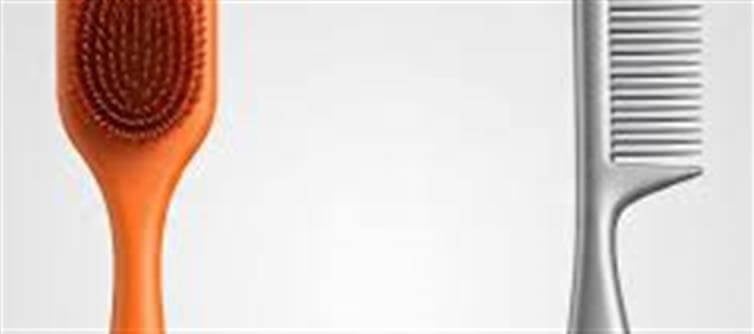
Combing hair seems simple, but using the wrong comb can damage your hair, weaken roots, and even contribute to baldness over time. Choosing the right comb for your hair type and usage habits is essential for healthy hair.
Why Using the Wrong Comb is Harmful
1. Breakage and Split Ends: Fine-toothed combs or metal combs can snap strands, causing split ends.
2. Hair Fall: Pulling hair with the wrong comb increases stress on hair follicles, leading to gradual hair loss.
3. Scalp Damage: Rough combs can scratch or irritate the scalp, reducing hair growth.
4. Tangles and Frizz: Using inappropriate combs on wet or curly hair can lead to tangles and frizz.
Tips for Choosing the Right Comb
1. Material Matters
· Wooden Combs: Gentle on hair, reduce static, and prevent breakage.
· Plastic Combs: Fine for everyday use but choose smooth, rounded-tooth designs.
· Metal Combs: Can be harsh on hair; avoid for regular use, especially on wet hair.
2. Tooth Spacing
· Wide-Tooth Combs: Best for curly, thick, or wet hair; prevents tangling and breakage.
· Fine-Tooth Combs: Good for straight or thin hair, styling, and precise parting.
3. Size and Shape
· Choose a comb that fits comfortably in your hand for easy control.
· Rounded edges reduce scalp irritation.
4. Comb According to Hair Type
· Curly Hair: Wide-tooth wooden combs
· Straight Hair: Medium or fine-tooth combs
· Thick or Long Hair: Wide-tooth combs or detangling brushes
5. Avoid Comb Mistakes
· Never comb wet hair aggressively; use a wide-tooth comb gently.
· Don’t share combs, as it spreads scalp infections.
· Clean your combs regularly to remove hair, oil, and dirt.
Bottom Line
The right comb protects your hair, maintains scalp health, and prevents unnecessary hair fall. A small change in your hair care routine—choosing the right comb—can save your hair from long-term damage and baldness.
Disclaimer:
The views and opinions expressed in this article are those of the author and do not necessarily reflect the official policy or position of any agency, organization, employer, or company. All information provided is for general informational purposes only. While every effort has been made to ensure accuracy, we make no representations or warranties of any kind, express or implied, about the completeness, reliability, or suitability of the information contained herein. Readers are advised to verify facts and seek professional advice where necessary. Any reliance placed on such information is strictly at the reader’s own risk..jpg)




 click and follow Indiaherald WhatsApp channel
click and follow Indiaherald WhatsApp channel